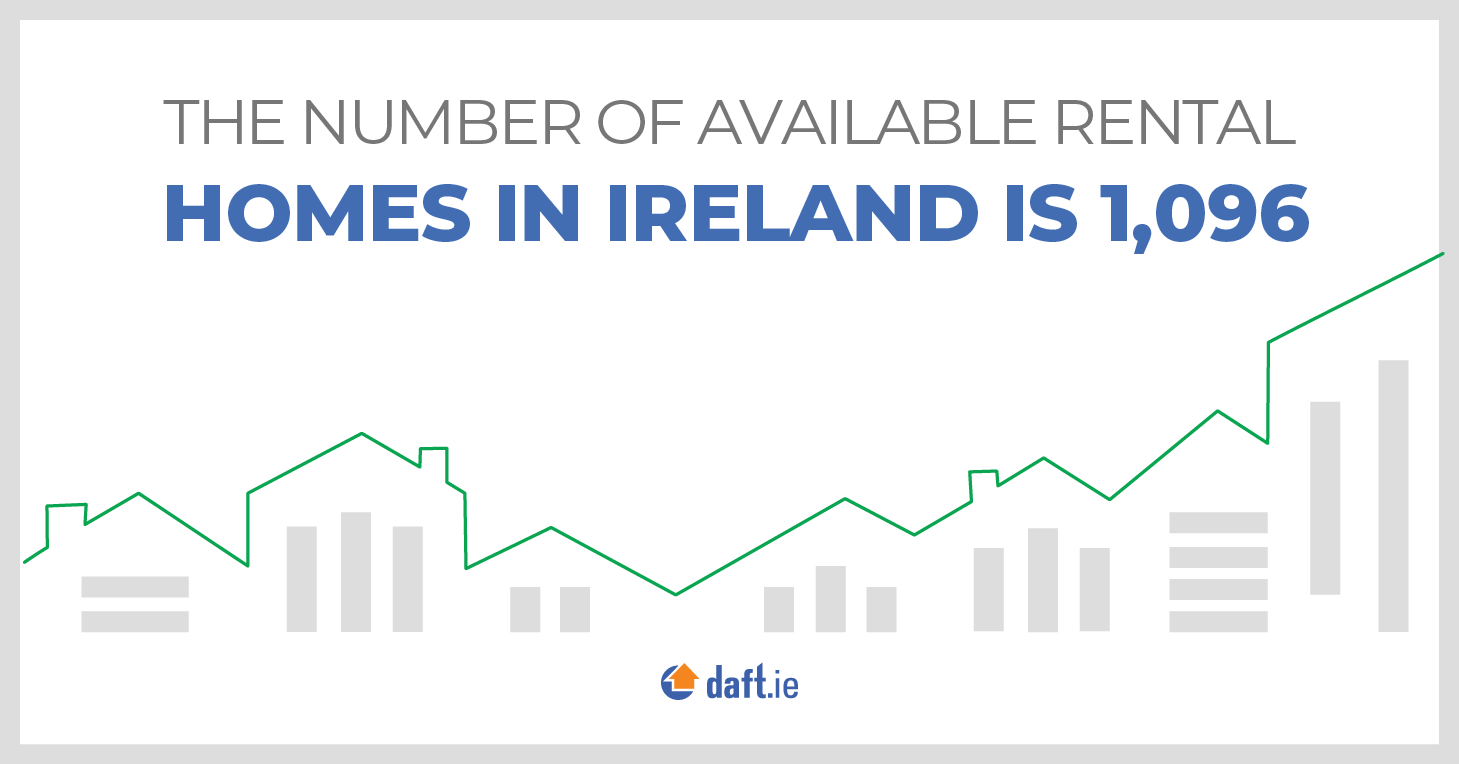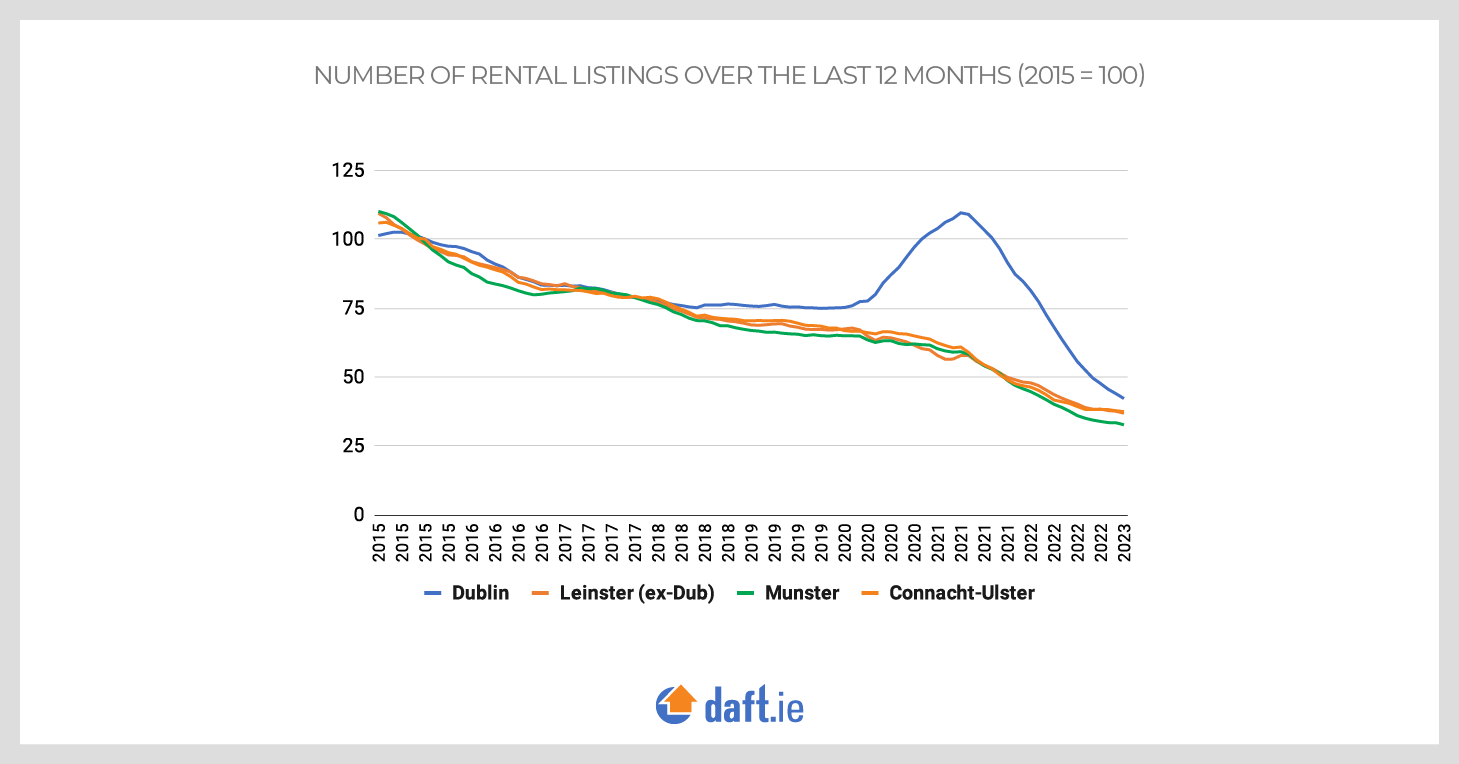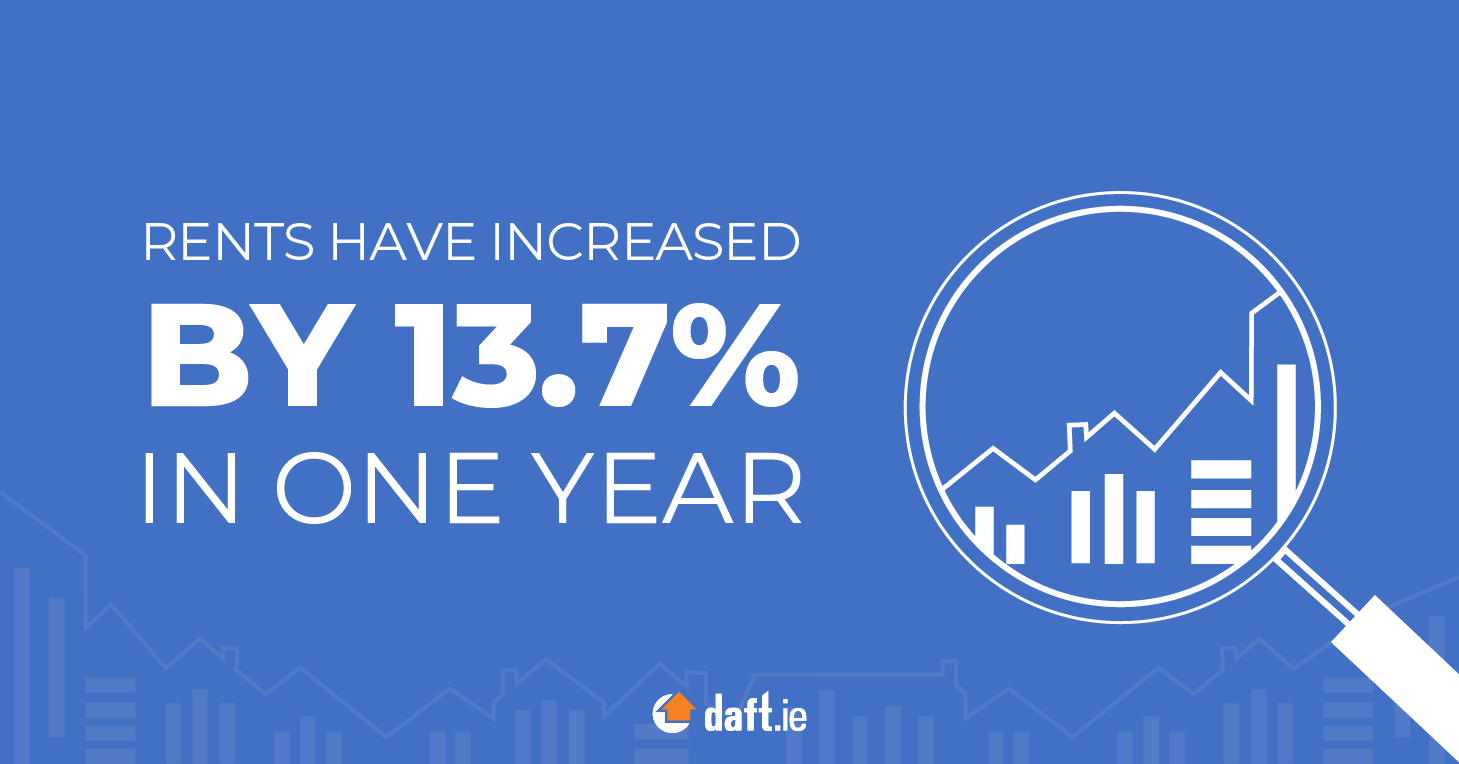Irish Rental Report Q4 2022 | Daft.ie
Daft Reports
- Ronan Lyons (House Price, Q1 2024)
- Ronan Lyons (Rental Price, Q4 2023)
- Ronan Lyons (House Price, Q4 2023)
- Ronan Lyons (Rental Price, Q3 2023)
- Ronan Lyons (House Price, Q3 2023)
- Ronan Lyons (Rental Price, Q2 2023)
- Ronan Lyons (House Price, Q2 2023)
- Ronan Lyons (Rental Price, Q1 2023)
- Ronan Lyons (House Price, Q1 2023)
- Ronan Lyons (Rental Price, Q4 2022)
- Ronan Lyons (House Price, Q4 2022)
- Ronan Lyons (Rental Price, Q3 2022)
- Ronan Lyons (House Price, Q3 2022)
- Ronan Lyons (Rental Price, Q2 2022)
- Ronan Lyons (House Price, Q2 2022)
- Ronan Lyons (Rental Price, Q1 2022)
- Ronan Lyons (House Price, Q1 2022)
- Ronan Lyons (Rental, Q4 2021)
- Ronan Lyons (House Price, Q4 2021)
- Ronan Lyons (Rental, Q3 2021)
- Ronan Lyons (House Price, Q3 2021)
- Ronan Lyons (Rental, Q2 2021)
- Ronan Lyons (House Price, Q2 2021)
- Ronan Lyons (Rental, Q1 2021)
- Ronan Lyons (House Price, Q1 2021)
- Ronan Lyons (Rental, Q4 2020)
- Ronan Lyons (House Price, Q4 2020)
- Ronan Lyons (Wealth, H2 2020)
- Ronan Lyons (Rental, Q3 2020)
- Ronan Lyons (House Price, Q3 2020)
- Ronan Lyons (Housing, July 2020)
- Ronan Lyons (Housing, June 2020)
- Ronan Lyons (Housing, May 2020)
- Ronan Lyons (Rental, Q1 2020)
- Ronan Lyons (House Price, Q1 2020)
- Ronan Lyons (Rental, Q4 2019)
- Ronan Lyons (House Price, Q4 2019)
- Ronan Lyons (Wealth, H2 2019)
- Ronan Lyons (Rental, Q3 2019)
- Ronan Lyons (House Price, Q3 2019)
- Pierre Yimbog (Rental, Q2 2019)
- Ronan Lyons (House Price, Q2 2019)
- Ronan Lyons (Wealth, H1 2019)
- Ronan Lyons (Rental, Q1 2019)
- Ronan Lyons (House Price, Q1 2019)
- Ronan Lyons (Rental, Q4 2018)
- Ronan Lyons (House Price, Q4 2018)
- Ronan Lyons (Wealth, H2 2018)
- Ronan Lyons (Rental, Q3 2018)
- Ronan Lyons (House Price, Q3 2018)
- Shane De Rís (Rental, Q2 2018)
- Ronan Lyons (House Price, Q2 2018)
- Ronan Lyons (Wealth, 2018)
- Ronan Lyons (Rental, Q1 2018)
- Ronan Lyons (House Price, Q1 2018)
- Ronan Lyons (Rental, Q4 2017)
- Ronan Lyons (House Price, Q4 2017)
- Ronan Lyons (Rental, Q3 2017)
- Ronan Lyons (House Price, Q3 2017)
- Katie Ascough (Rental, Q2 2017)
- Ronan Lyons (Wealth, 2017)
- Ronan Lyons (House Price, Q2 2017)
- Ronan Lyons (Rental, Q1 2017)
- Ronan Lyons (House Price, Q1 2017)
- Ronan Lyons (Rental, Q4 2016)
- Ronan Lyons (House Price, Q4 2016)
- Ronan Lyons (Rental, Q3 2016)
- Ronan Lyons (House Price, Q3 2016)
- Ronan Lyons (School Report, 2016)
- Conor Viscardi (Rental, Q2 2016)
- Ronan Lyons (Rail Report, 2016)
- Ronan Lyons (House Price, Q2 2016)
- Ronan Lyons (Rental, Q1 2016)
- Ronan Lyons (House Price, Q1 2016)
- Ronan Lyons (Rental, Q4 2015)
- Ronan Lyons (House Price, Q4 2015)
- Ronan Lyons (Rental, Q3 2015)
- Ronan Lyons (House Price, Q3 2015)
- Marcus O'Halloran (Rental, Q2 2015)
- Ronan Lyons (House Price, Q2 2015)
- Ronan Lyons (Rental, Q1 2015)
- Ronan Lyons (House Price, Q1 2015)
- Ronan Lyons (Rental, Q4 2014)
- Ronan Lyons (House Price, Q4 2014)
- Ronan Lyons (Rental, Q3 2014)
- Ronan Lyons (House Price, Q3 2014)
- Domhnall McGlacken-Byrne (Rental, Q2 2014)
- Ronan Lyons (House Price, Q2 2014)
- Ronan Lyons (Rental, Q1 2014)
- Ronan Lyons (House Price, Q1 2014)
- Ronan Lyons (Rental, Q4 2013)
- Ronan Lyons (House Price, Q4 2013)
- Ronan Lyons (Rental, Q3 2013)
- Ronan Lyons (House Price, Q3 2013)
- Ronan Lyons (Rental, Q2 2013)
- Ronan Lyons (House Price, Q2 2013)
- Ronan Lyons (Rental, Q1 2013)
- Ronan Lyons (House Price, Q1 2013)
- Ronan Lyons (Rental, Q4 2012)
- Ronan Lyons (House Price, Q4 2012)
- Lorcan Sirr (Rental, Q3 2012)
- Padraic Kenna (House Price, Q3 2012)
- John Logue (Rental, Q2 2012)
- Ronan Lyons (House Price, Q2 2012)
- Barry O'Leary (Rental, Q1 2012)
- Seamus Coffey (House Price, Q1 2012)
- Joan Burton (Rental, Q4 2011)
- Ronan Lyons (House Price, Q4 2011)
- Philip O'Sullivan (Rental, Q3 2011)
- Sheila O'Flanagan (House Price, Q3 2011)
- Rachel Breslin (Rental, Q2 2011)
- Constantin Gurdgiev (House Price, Q2 2011)
- Cormac Lucey (Rental, Q1 2011)
- Eoin Fahy (House Price, Q1 2011)
- Lorcan Roche Kelly (Rental, Q4 2010)
- Ronan Lyons (House Price, Q4 2010)
- John Fitzgerald (Rental, Q3 2010)
- Patrick Koucheravy (House Price, Q3 2010)
- Gary Redmond (Rental, Q2 2010)
- Jim Power (House Price, Q2 2010)
- Jill Kerby (Rental, Q1 2010)
- Brian Lucey (House Price, Q1 2010)
- Michael Taft (Rental, Q4 2009)
- Alan McQuaid (House Price, Q4 2009)
- Dr. Charles J. Larkin (Rental, Q3 2009)
- Emer O'Siochru (House Price, Q3 2009)
- Ronan Lyons (Rental, Q2 2009)
- Oliver Gilvarry (House Price, Q2 2009)
- Brian Devine (Rental, Q1 2009)
- Dr. Liam Delaney (House Price, Q1 2009)
- Gerard O'Neill (Rental, Q4 2008)
- Ronan Lyons (House Price, Q4 2008)
- Dr. Stephen Kinsella (Rental, Q3 2008)
- Moore McDowell (House Price, Q3 2008)
- Shane Kelly (Rental, Q2 2008)
- Fergal O'Brien (House Price, Q2 2008)
- Eoin O'Sullivan (Rental, Q1 2008)
- Dermot O'Leary (House Price, Q1 2008)
- Dan O'Brien (Rental, Q4 2007)
- Frances Ruane (House Price, Q4 2007)
- John McCartney (Rental, Q3 2007)
- Ronnie O'Toole (House Price, Q3 2007)
- Ronan Lyons (Rental, Q2 2007)
- Constantin Gurdgiev (House Price, Q2 2007)
- Fintan McNamara (Rental, Q1 2007)
- Rossa White (House Price, Q1 2007)
- Geoff Tucker (Rental, Q4 2006)
- Damien Kiberd (House Price, Q4 2006)
- Pat McArdle (House Price, Q3 2006)
- Marc Coleman (House Price, Q2 2006)
- David Duffy (House Price, Q1 2006)
- Austin Hughes (House Price, Q4 2005)
- David McWilliams (House Price, Q2 2005)

13th Feb 2023
Ireland's private rental market remains chronically starved of homes
This is the stark finding from the latest Rental Report. While not new, the fact that it is persistent and shows little signs of abating must serve as a wake-up call.
Many ‐ particularly those who have the misfortune of trying to find something in the open market currently ‐ are only too aware of the challenges out there. To these people, it must seem almost obvious that it doesn't need saying that, when faced with an acute shortage of rental homes, the solution is to build more rental homes.
However, many others are shielded from how brutal it is out there. Some only become aware when a family member or new colleague has to run the gauntlet of finding a home to rent on the open market. But many are simply unaware that it is in Ireland's rental segment ‐ not its sales segment ‐ where the country's housing woes are concentrated.
The lack of awareness of just how grim things are includes, it must be said, some local authorities and some national policymakers. Over the past year or so, various efforts have been taken to limit, not increase, the construction of new rental homes. This is, by any accounts, an extraordinary turn of events.

Fewer than 1,100 homes were available to rent on February 1st. This is largely unchanged on the number three months ago, at the time of the last report, and down almost 22% on the figure available on the same date a year ago.
But that figure from 2022 was itself a complete outlier in a series that stretches back to 2006. Between 2015 and 2019, a time when supply was very weak relative to demand ‐ pulling up rents ‐ there were typically 3,800 homes available to rent at the start of February. The average for February 1st over the full period 2006-2021 was 8,500.
This hopefully puts into context just how bad things are if there are only 1,100 homes on the market.
After the last Daft Rental Report, a number of commentators suggested that one possible explanation for a 95% fall in availability, comparing February 1st 2023 with the peak almost 15 years ago, was simply a falling use of the Daft.ie platform among renters. This, however, conflates availability and supply ‐ or the stock on the market at any one time and the number of listings that go through the site over any given period (such as a year).
If falling use of Daft.ie were driving the trend, then registrations of tenancies with the Residential Tenancies Board would be exhibiting a different trend. Instead, both sources show almost identical trends, with close to halving in the number of listings/registrations since 2016.
This trend is shown in more detail in the figure accompanying this commentary. It shows the total number of rental listings over the previous 12 months, for each of four regions, with 2015 set to 100. First, the national scale of the problem is obvious: all four regions are experiencing similar shortages of listings now compared to seven or eight years ago.
Secondly, the covid19 blip is obvious in Dublin: as lockdown kicked in, listings increased ‐ and indeed at their peak in the year to early 2021, there were more rental listings then than in 2015. But the blip was just that ‐ a temporary reversal of a longer-term trend. And as of early 2023, Dublin appears as starved of rental homes as any other part of the country.

A second argument used to explain away the incredible shortage of open-market rental listings is that these figures do not capture in full the new purpose-built rental homes in the Dublin area. If that were the case, this is in part answered by the graph above: if the new supply had been sufficient to meet demand, then the tightness in the pre-existing rental segment would be relaxed and instead, it seems that the newly-built rental homes are at a scale that is simply inadequate to meet the volume of demand in Dublin.
RTB figures on tenancy registrations have been largely unavailable in recent months, apparently due to issues around capacity after introducing annual tenancy registrations. Until they are back live in full, statistics on the occupancy rates of multi-unit rental homes cannot be calculated.
However, statistics for rental developments that have newly opened are available and accurate and, as detailed in this report, point to a brisk uptake of any new supply coming on to the market. Across almost 25 new developments that have opened since the start of 2022, over 2,000 tenancies have been started ‐ an average of almost 40 per week.
Unfortunately, it seems that this may be at best only partially offsetting the loss of other rental stock. Rather than limiting the construction of new rental homes ‐ or forcing a mix of tenures within individual developments, which has the same net effect ‐ it is imperative that policymakers find a way to boost the construction of badly needed homes for rent.
As the concentration of new rental homes in Dublin shows, this is ultimately about viability: linking the resources spent building the homes with the income that will be generated from them. While politicians prefer to focus on affordability, the link between housing prices (sale or rental) and incomes, there can be no affordability without viability.
And without viability, we will see further increases in market rents ‐ on top of the 13.7% increase in market rents recorded in 2022.

